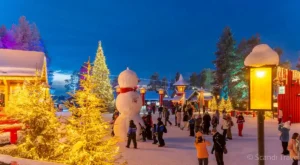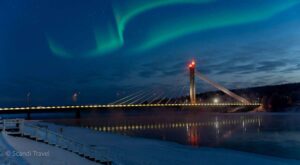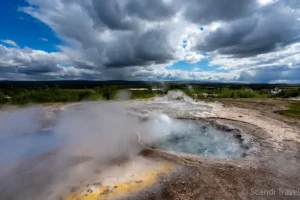Lapland holidays are memorable for many reasons, including the enormous range of unique activities available to the tourist. One of these experiences not to be missed is the opportunity to go dog sledding. The power and strength of dogs has been used for hunting and travel in snowy climates for more than a millennium; dogs have contributed enormously to human culture not just as man’s best friend and companion, but as a working partner. It is believed that sled dogs evolved in Mongolia as far back as thirty five thousand years. Archaeological evidence suggests Arctic humans have worked with dogs for over four thousand years. These dogs were often bred for the purpose of pulling a sled, and were key to human survival. So revered were these dogs, they were often allowed to sleep in the family tent. Dog sleds were essential transport systems in regions that would otherwise be inaccessible, hauling goods and carrying people. Sled dogs have been widely used in all the Arctic countries: Lapland, Canada, Sweden, Norway, Greenland, Siberia, Alaska, and Chukotka. In the early 1900s, Arctic mail delivery was by dog sled! Sled dogs were originally chosen for strength, stamina and size; today they are bred for endurance and speed. For recreational dog sledding, Siberian Huskies and Alaskan Malamutes are most commonly used, due to their willingness to run and their outstanding aesthetic beauty. For sled racing, however, Alaskan Huskies are more popular, as they have superior speed, endurance, and dedication to running. Other dog breeds commonly used include the Canadian Eskimo Dog, the Chinook, the Greenland Dog, and the Samoyed. The assembly of a dog sled team involves appointing leader dogs, followed by point dogs, followed by swing dogs, team dogs and finally wheel dogs. Like on any team, each dog has their job and is chosen on the basis of their strengths. For example, the leader dogs must be reliable and strong of will. The team dogs are chosen for their speed, endurance, and strength as well as their teamwork. The wheel dogs must have superior strength to pull the sled out from the snow. Did you know?
- Sled dog teams can run 30km/hr
- The leader must be accepted as such by the other dogs on the team
- The musher (human on the sled) has to push the sled if the snow is too soft
- The harness must always be straight so as not to tangle in the feet of the dogs
- Sled dogs are chosen as puppies; they must have a very dense coat of fur
- Sled dogs must be willing to eat whatever they are given
- A favourite meal for sled dogs? Reindeer soup!






